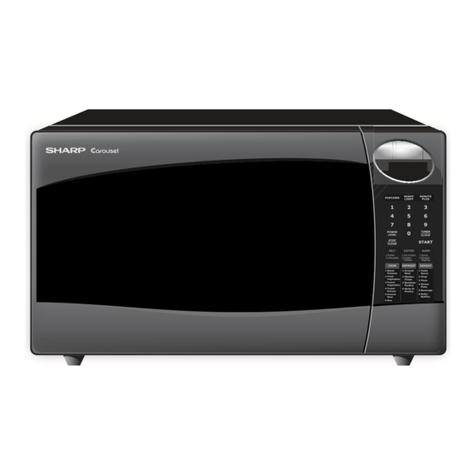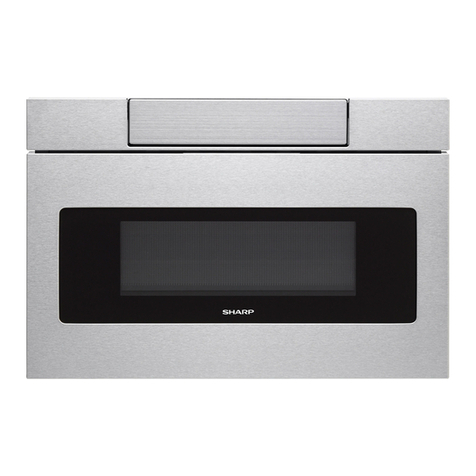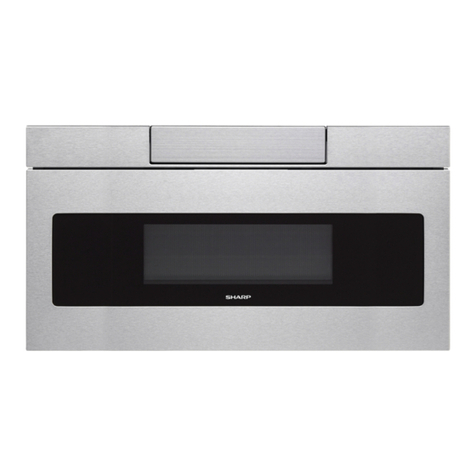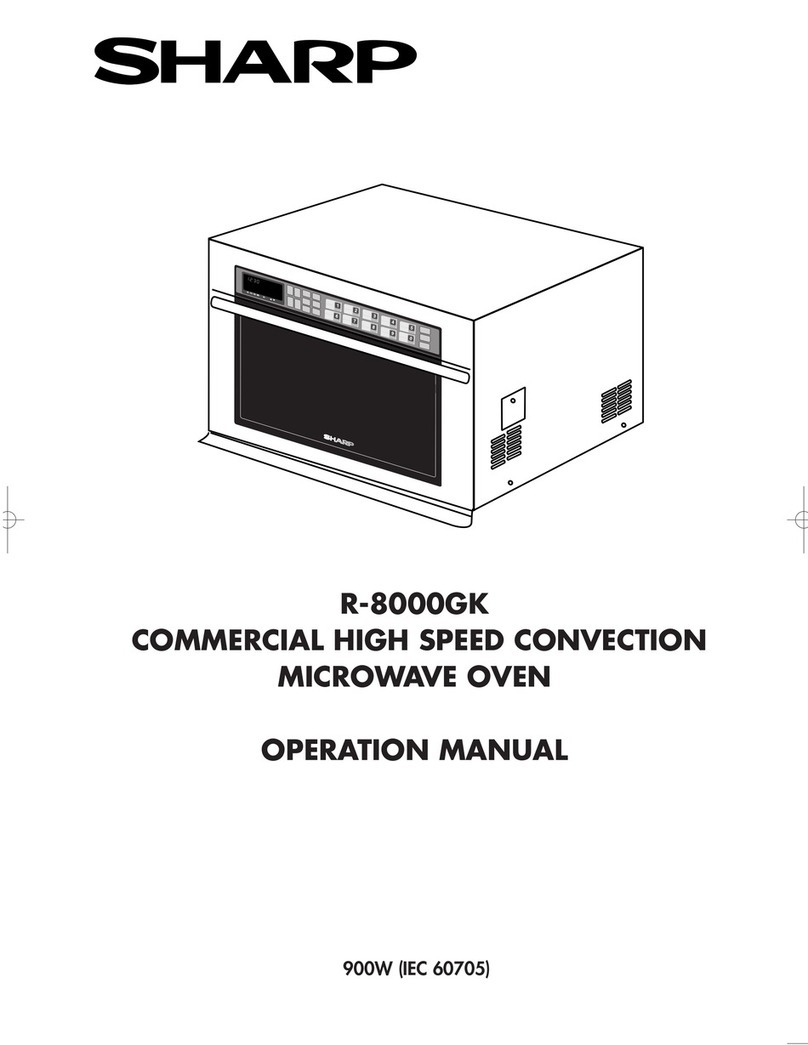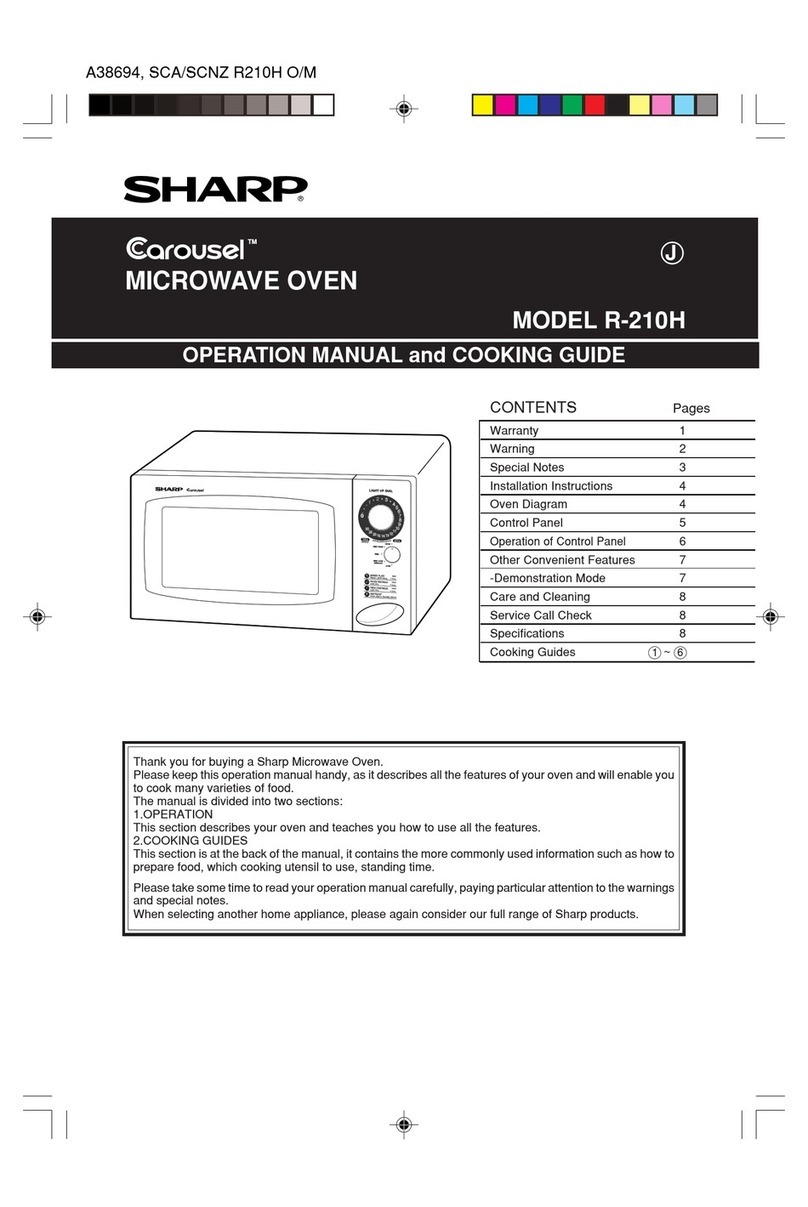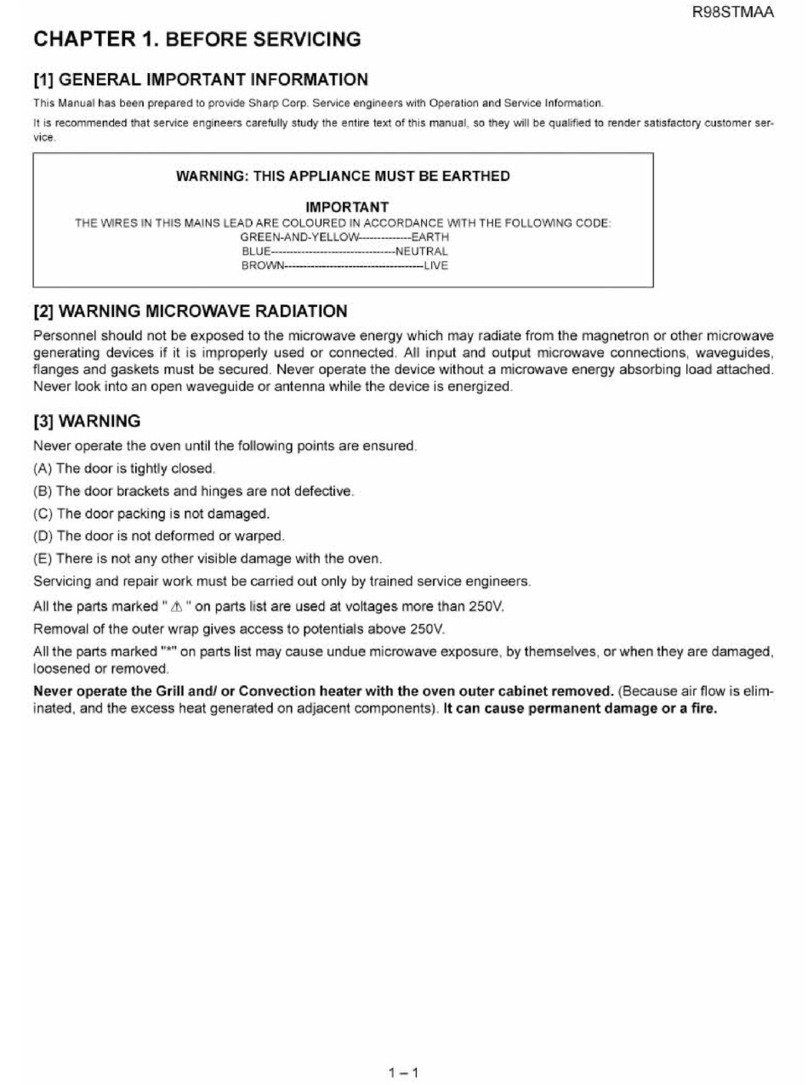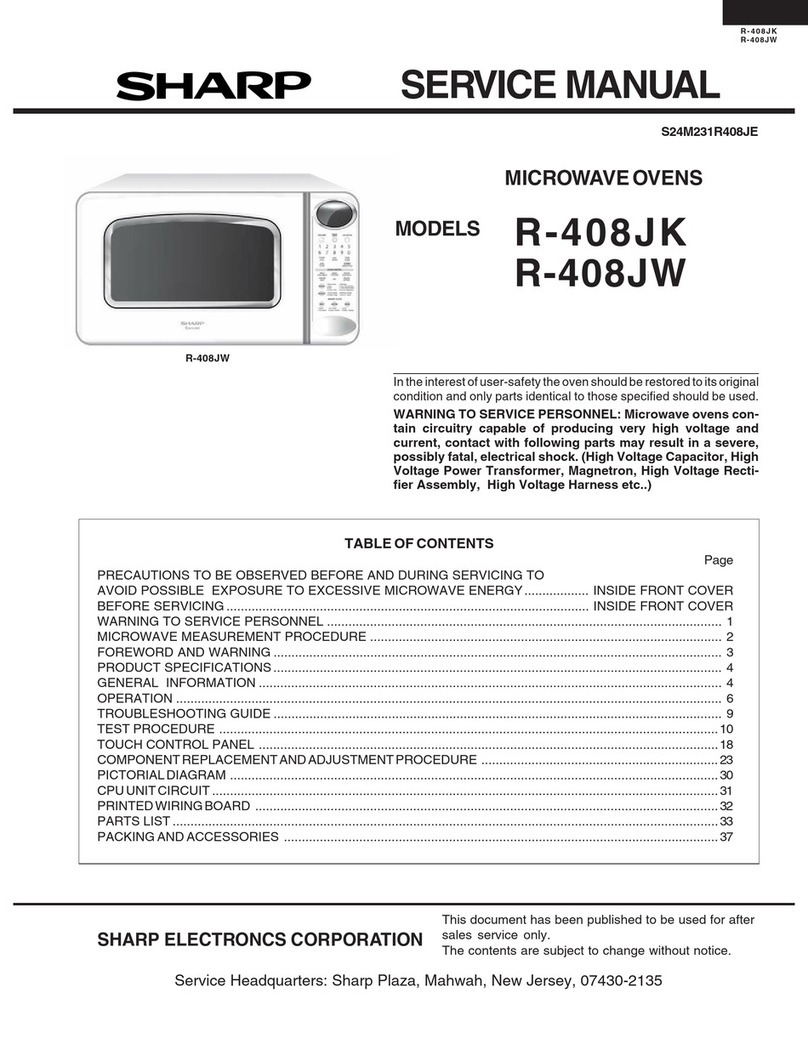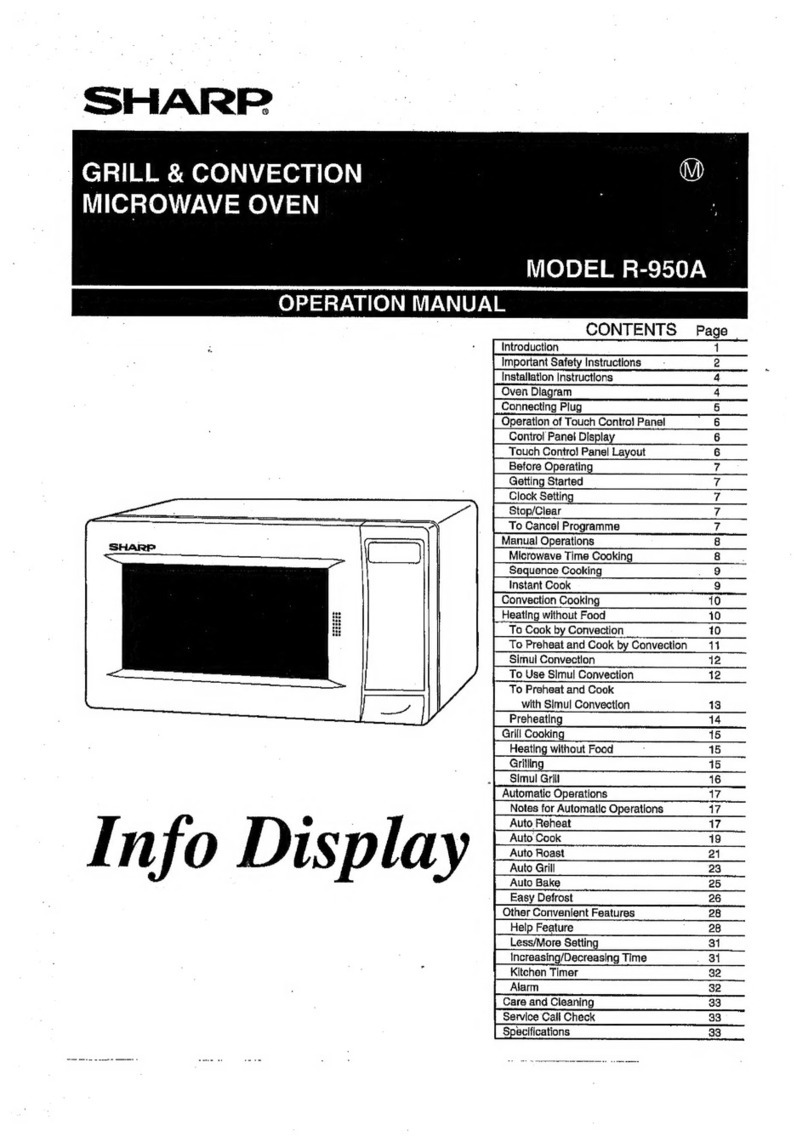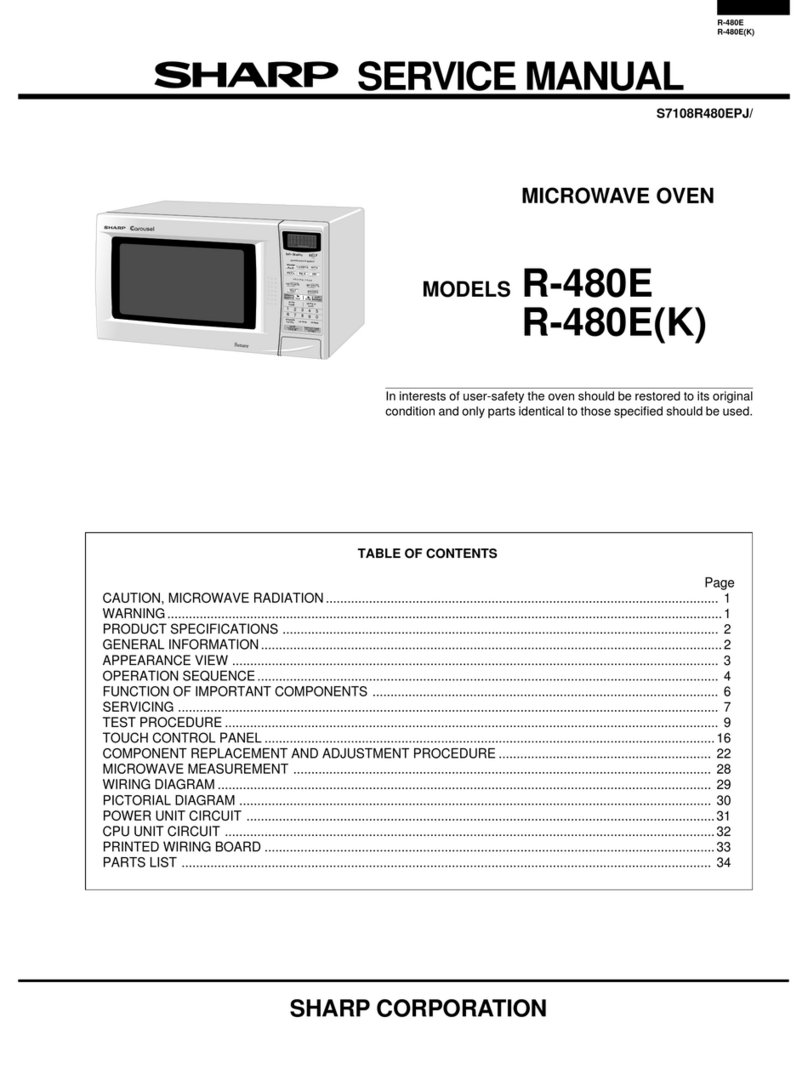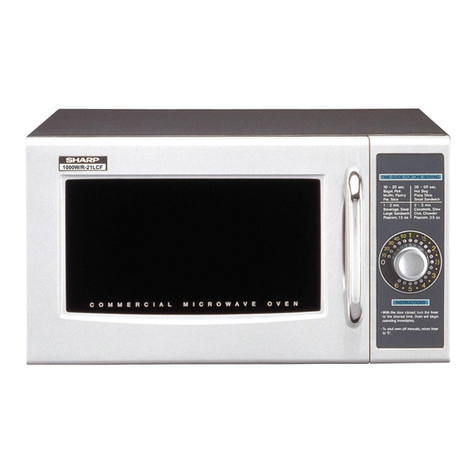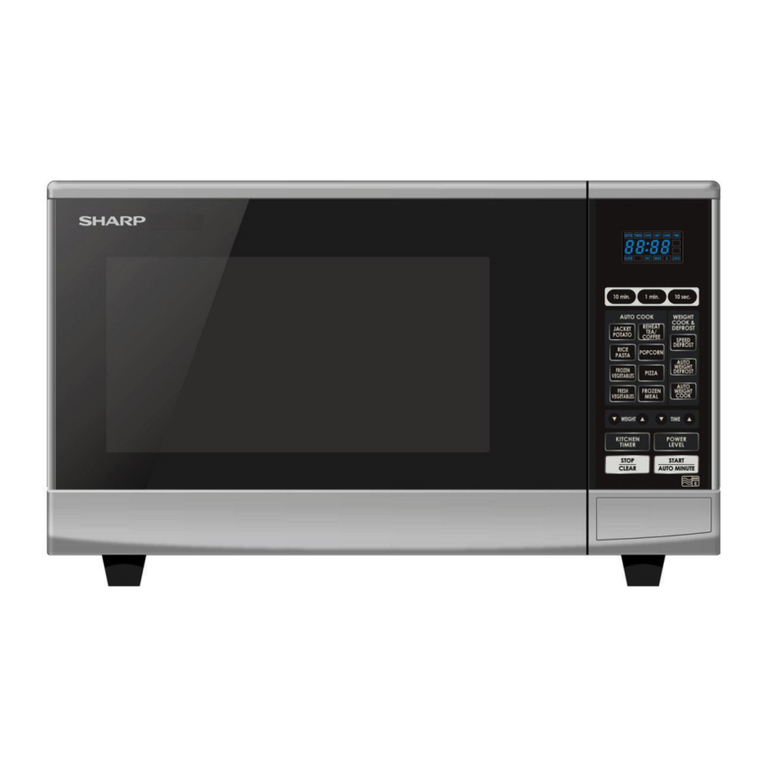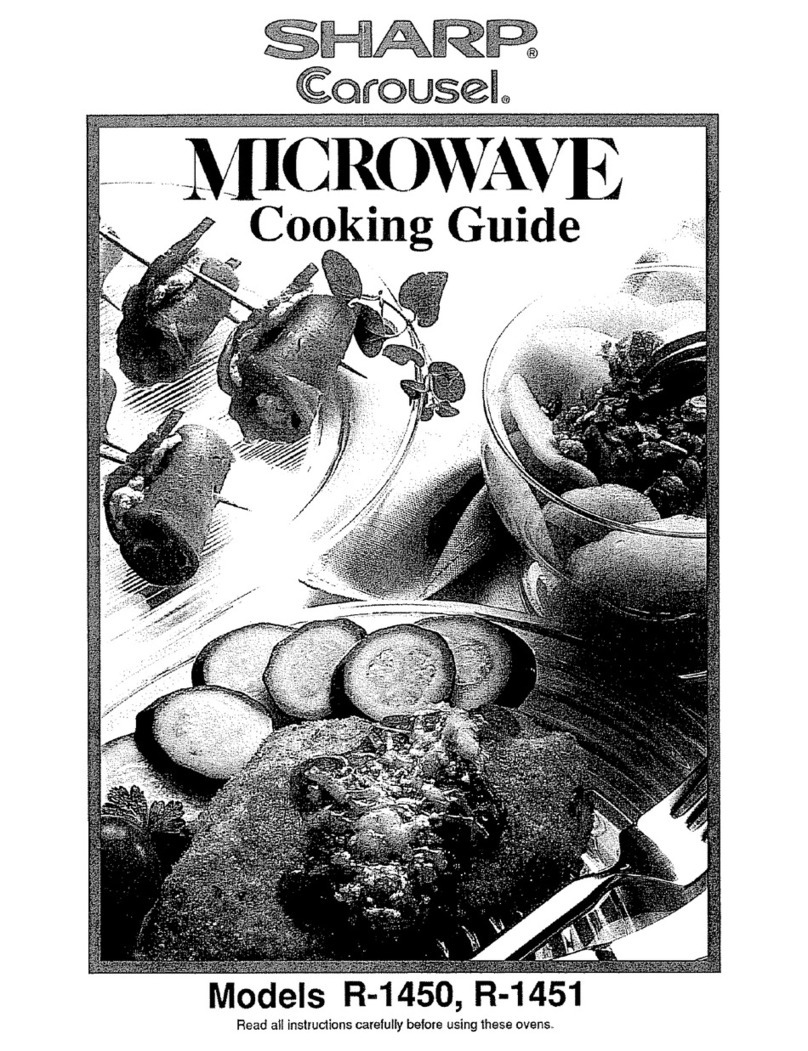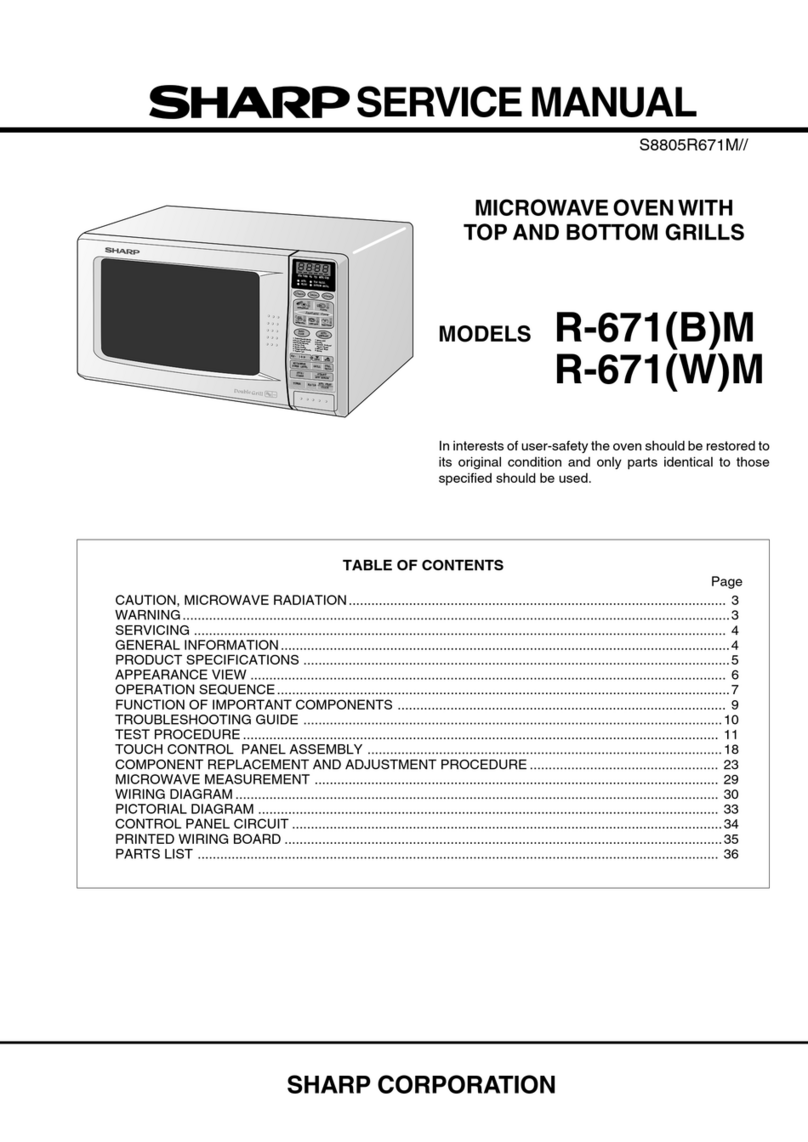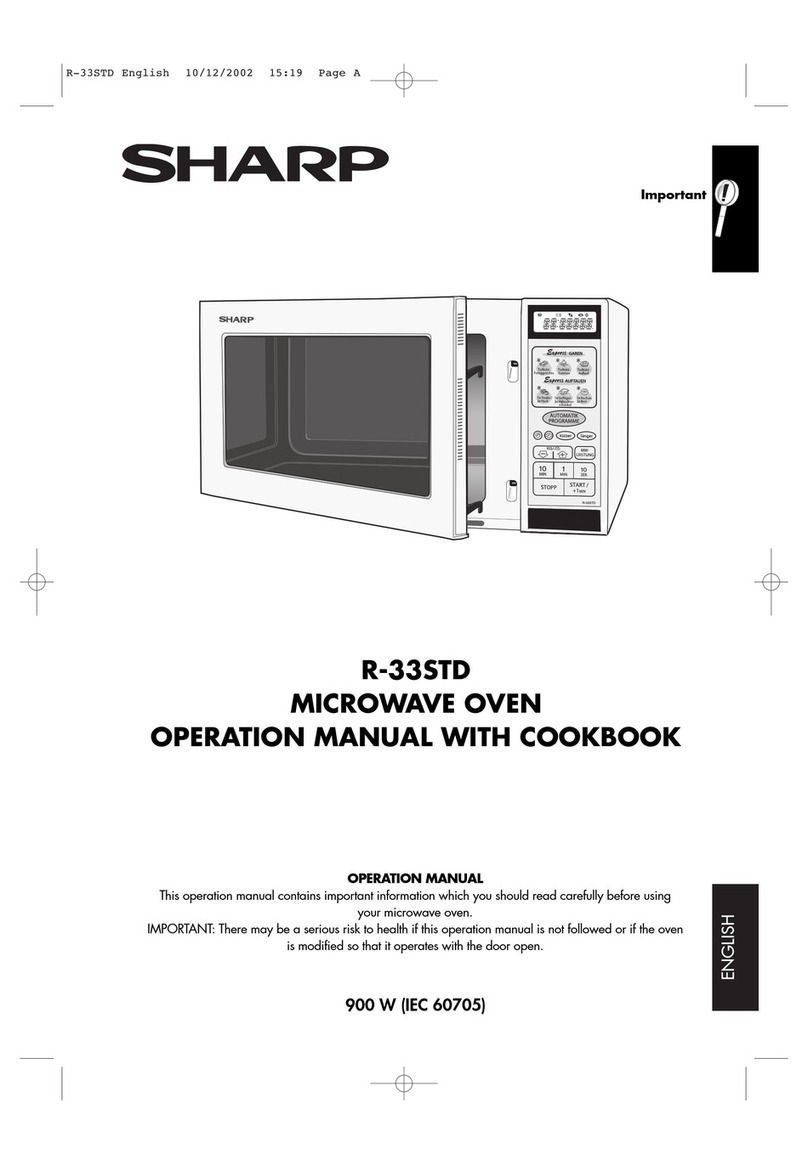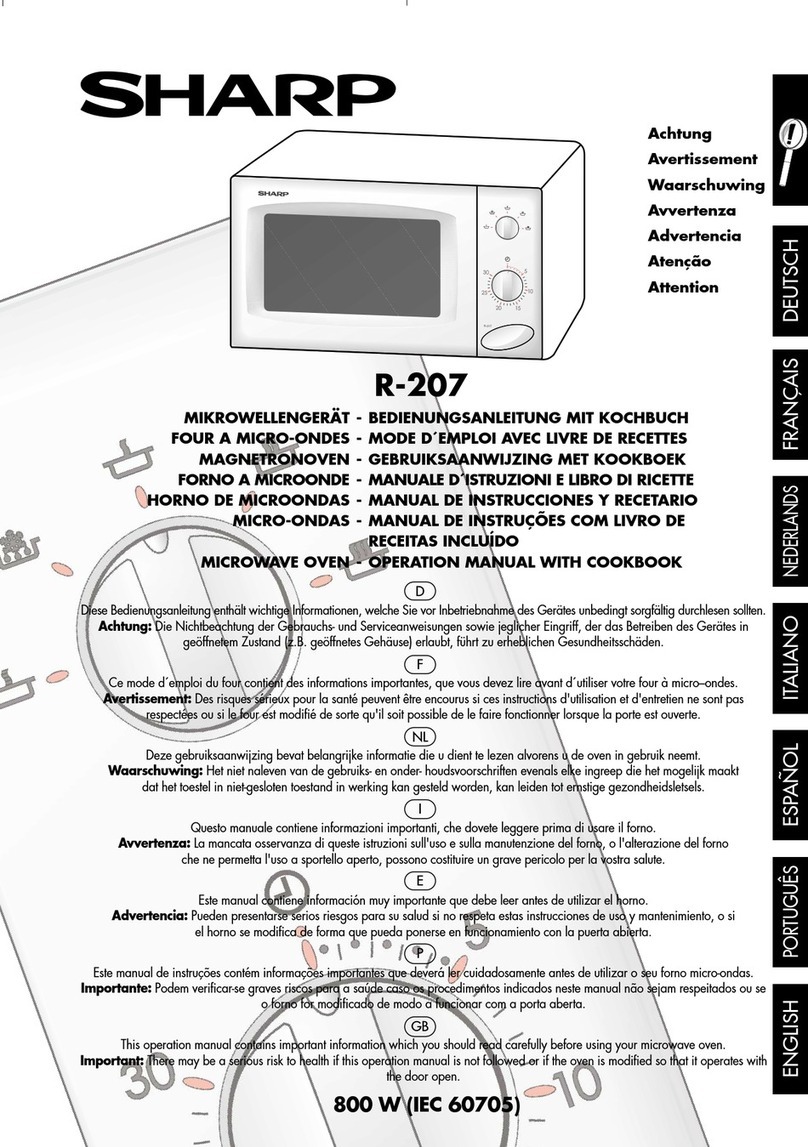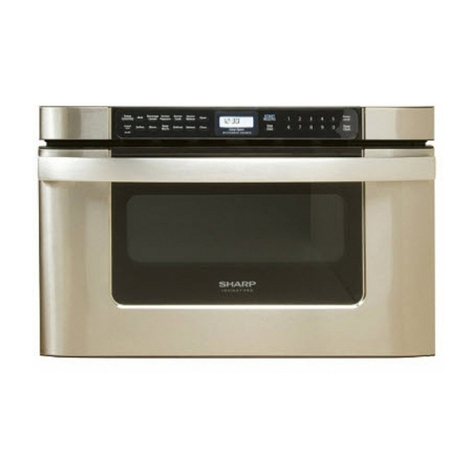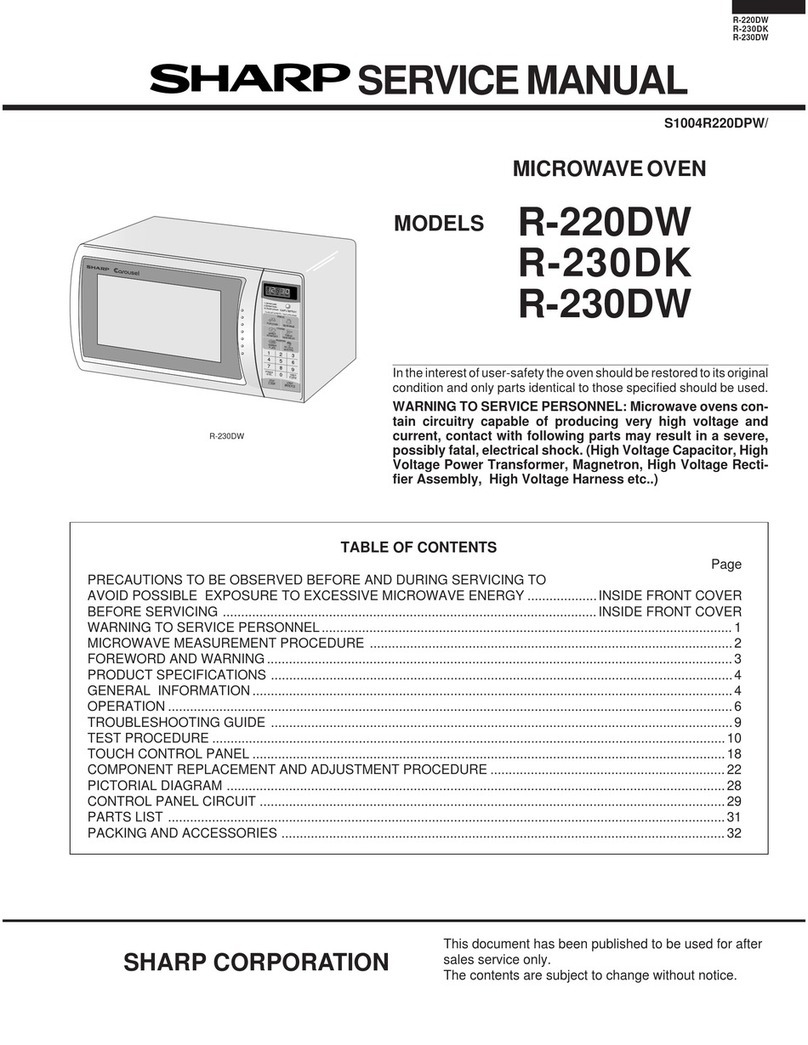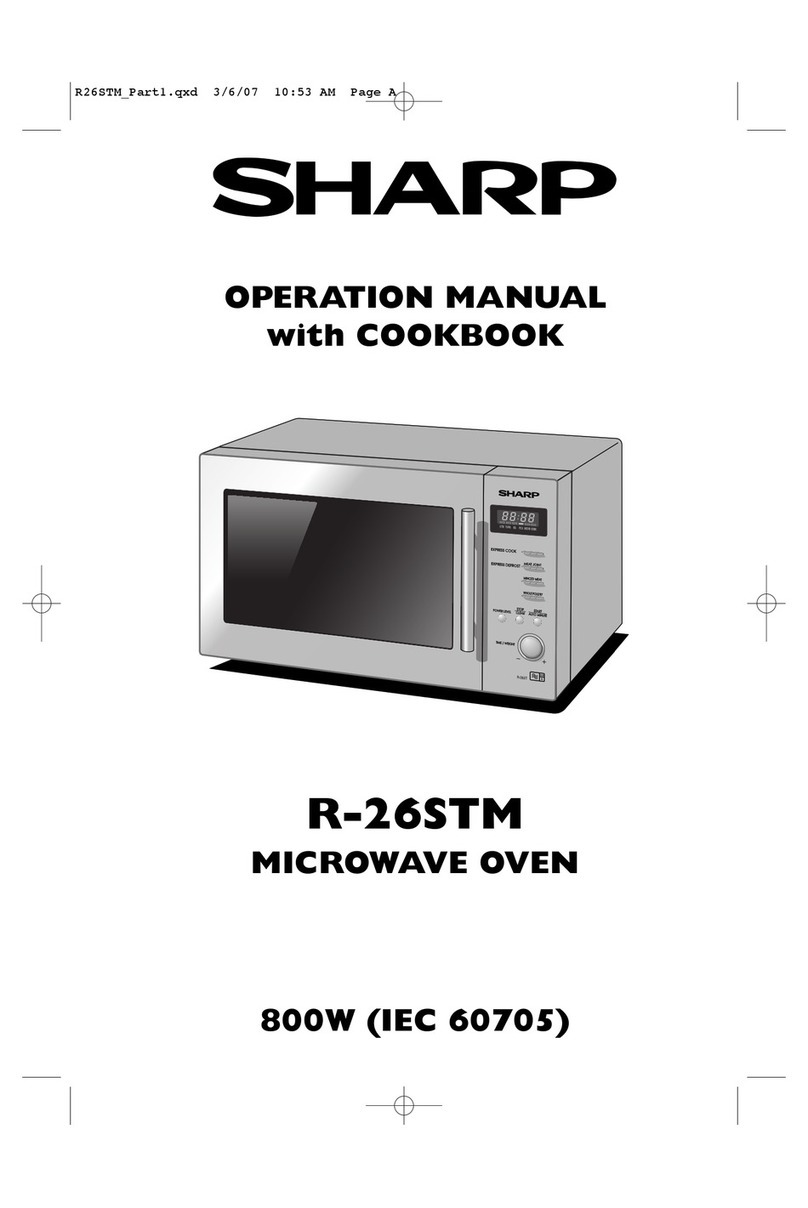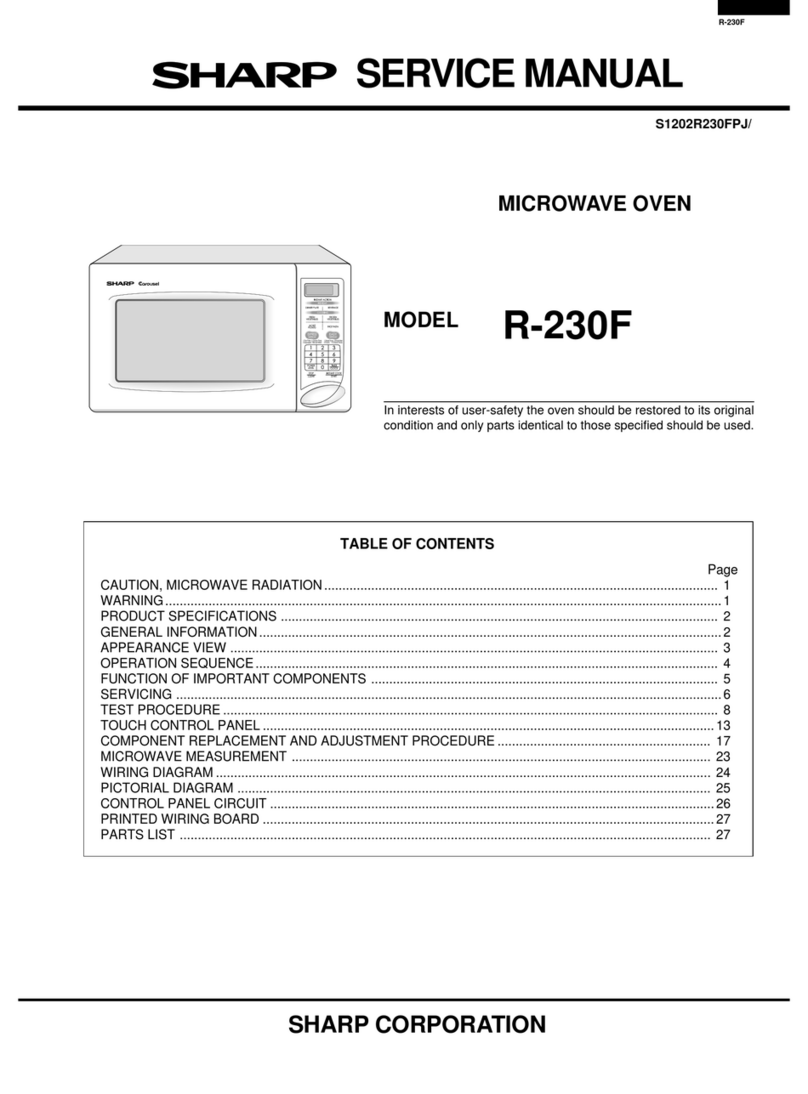R-350D
4
OPERATION SEQUENCE
OFF CONDITION
Closing the door activates all door interlock switches
(1st. latch switch, 2nd. latch switch and stop switch).
IMPORTANT
Whentheovendoorisclosed,themonitorswitchcontacts
(COM-NC) must be open.
Whenthemicrowaveovenispluggedinawalloutlet,rated
voltage is supplied to the noise filter and the control unit.
Figure O-1 on page 25
1. The display shows "SHARP MICRO-WAVE OVEN".
2. To set any programmes or set the clock, you must
first touch the STOP/CLEAR pad.
3. : appears in the display.
NOTE: When the oven door is opened, the oven lamp
comes on at this time.
MICROWAVE COOKING CONDITION
HIGH COOKING
Enter a desired cooking time with the touching NUMBER
pad and start the oven with touching START pad.
Function sequence
Figure O-2 on page 25
CONNECTED COMPONENTS RELAY
Oven lamp, Fan motor, Turntable motor RY1
Power transformer RY2
1. Ratedvoltage issupplied tothe primarywindingof the
power transformer. The voltage is converted to about
3.3 volts A.C. output on the filament winding and high
voltage of approximately 2000 volts A.C. on the
secondary winding.
2. The filament winding voltage (3.3 volts) heats the
magnetronfilamentandthehighvoltage(2000volts)is
sentto thevoltage doublingcircuit, whereit isdoubled
to negative voltage of approximately 4000 volts D.C..
3. The 2450 MHz microwave energy produced in the
magnetron generates a wave length of 12.24 cm. This
energyischanneledthroughthewaveguide(transport
channel)into theovencavity,where thefoodis placed
to be cooked.
4. Whenthecookingtimeisup,asignaltoneisheardand
the relays RY1+RY2 go back to their home position.
The circuits to the oven lamp, power transformer, fan
motor and turntable motor are cut off.
5. When the door is opened during a cook cycle, the
switches come to the following condition
CONDITION
DURING DOOR OPEN
SWITCH CONTACT COOKING
(NOCOOKING)
1st. latch switch COM-NO Closed Open
2nd. latch switch COM-NO Closed Open
Monitor switch COM-NC Open Closed
Stop switch COM-NO Closed Open
The circuits to the power transformer, fan motor and
turntable motor are cut off when the 1st. latch switch,
2nd.latchswitch,and stopswitcharemadeopen.The
ovenlamp remainson evenif theoven dooris opened
after the cooking cycle has been interrupted, because
therelayRY1staysclosed.Shown inthedisplayisthe
remaining time.
6. MONITOR SWITCH CIRCUIT
The monitor switch is mechanically controlled by
oven door, and monitors the operation of the 1st and
2nd. latch switches.
6-1 When the oven door is opened during or after the
cycleofacookingprogram,the1st.latchswitch,2nd.
latchswitchandstopswitchmustopen their contacts
first.
After that the contacts (COM-NC) of the monitor
switch can be closed.
6-2. When the oven door is closed, the contacts (COM-
NC) of the monitor switch must be opened. After that
thecontacts ofthe 1st.latch switch,2nd.latch switch
and stop switch are closed.
6-3. When the oven door is opened and the contacts of
the1st. latch switch, 2nd. latch switch remain closed.
ThefuseM10A willblow,becausethe monitorswitch
is closed and a short circuit is caused.
MEDIUM HIGH, MEDIUM, MEDIUM LOW, LOW
COOKING
When the microwave oven is preset for variable cooking
power, 230-240 volts A.C. power is supplied to the power
transformer intermittently within a 32-second time base
through the relay contact which is coupled with the cur-
rent-limitingrelay.Thefollowinglevelsofmicrowavepower
are given.
SETTING;
NOTE: TheON/OFFtimeratiodoesnotexactlycorrespond
to the percentage of microwave power, because
approx. 2 seconds are needed for heating up the
magnetron filament.
32 sec. ON
24 sec. ON
18 sec. ON
12 sec. ON
6 sec. ON
8 sec. OFF
14 sec. OFF
20 sec. OFF
26 sec. OFF
HIGH
MEDIUM HIGH
MEDIUM
MEDIUM LOW
LOW
Approx. 70%
Approx. 50%
Approx. 30%
Approx. 10%
